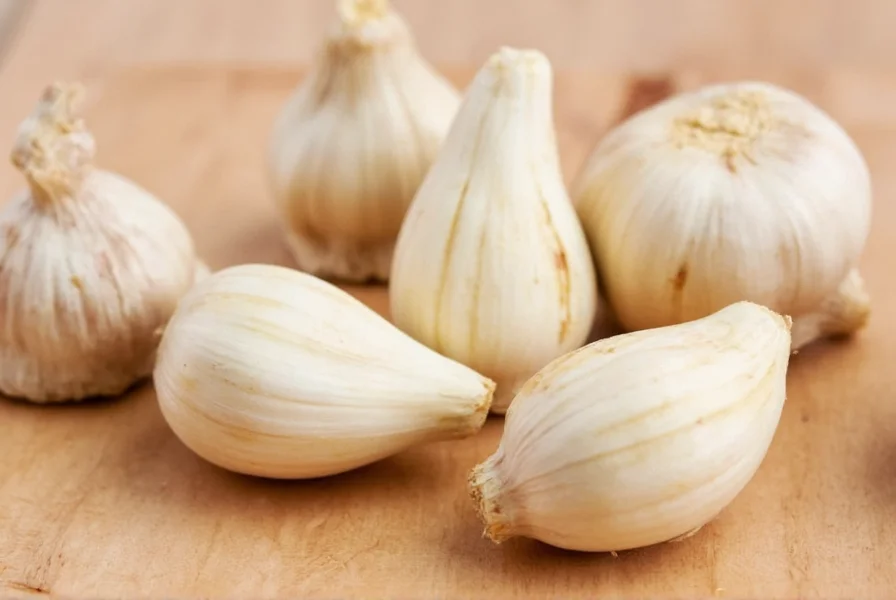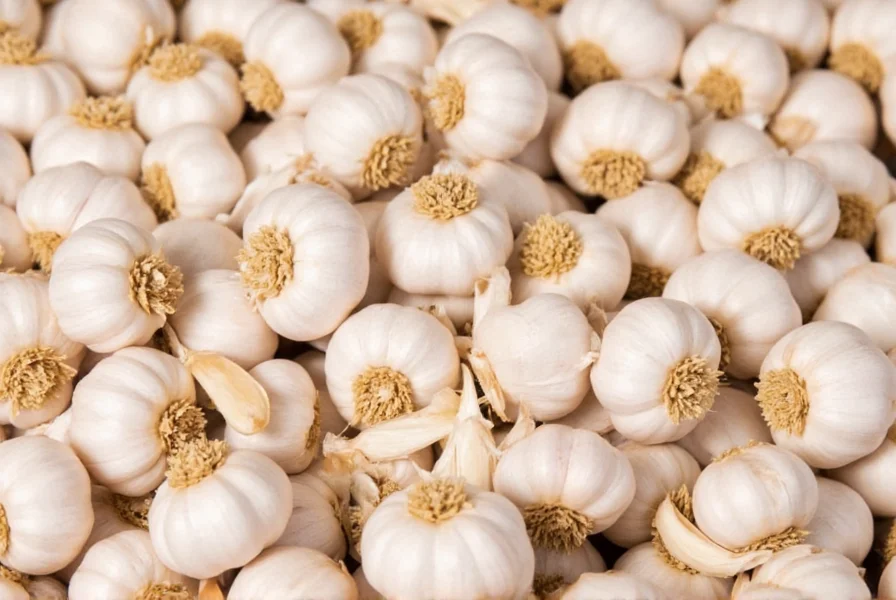Understanding garlic measurements can transform your cooking experience and ensure recipe accuracy. Whether you're following a traditional Italian pasta sauce recipe or preparing a Middle Eastern dip, knowing exactly what constitutes a garlic clove and how to measure it properly makes all the difference in flavor development.
Garlic Anatomy: Bulb, Clove, and Head Explained
Many home cooks confuse garlic terminology, leading to inconsistent results in the kitchen. The entire garlic unit you purchase is called a bulb or head. This bulb consists of multiple individual segments known as cloves, each wrapped in its own papery skin. The number of cloves per bulb varies significantly by garlic variety:
| Garlic Variety | Average Cloves Per Bulb | Flavor Profile |
|---|---|---|
| Softneck (Artichoke) | 10-12 | Milder, longer shelf life |
| Softneck (Silverskin) | 12-20 | Stronger, excellent for braiding |
| Hardneck (Rocambole) | 8-12 | Complex, rich flavor |
| Elephant Garlic | 4-6 | Much milder, larger cloves |
When shopping for garlic, look for firm bulbs without soft spots or green sprouts. The papery skin should feel dry and intact. Larger bulbs don't necessarily mean more cloves—they often contain the same number of larger individual cloves.
Garlic Measurement Conversions for Precise Cooking
Accurate garlic measurement prevents overpowering dishes or leaving them bland. Here's a comprehensive conversion guide for garlic clove measurement equivalents that every home cook should know:
- 1 medium garlic clove = 1/2 teaspoon minced garlic
- 1 medium garlic clove = 1/8 teaspoon garlic powder
- 1 teaspoon garlic paste = 2-3 cloves
- 1 tablespoon chopped garlic = 6 cloves
- 1 head of garlic (10-12 cloves) = 2-3 tablespoons minced garlic
These conversions assume medium-sized cloves. If you're working with particularly large or small cloves, adjust accordingly. For recipes specifying "1 head of garlic," expect to use all cloves from one bulb, which typically yields 2-3 tablespoons of minced garlic.

Culinary Applications of Garlic Cloves
Different cooking techniques require different garlic preparations. Understanding how to use garlic cloves in recipes properly affects both flavor and texture:
Raw applications: Finely mince or press cloves for salad dressings, aioli, or fresh salsas. Raw garlic has a sharper, more pungent flavor that mellows slightly when mixed with acidic ingredients like lemon juice or vinegar.
Sautéing: For most stir-fries and pasta dishes, add minced garlic to hot oil for 30-60 seconds until fragrant but not browned. Overcooked garlic turns bitter. One professional chef's trick: add a pinch of salt while sautéing to prevent burning.
Roasting: Whole cloves roasted with olive oil develop a sweet, mellow flavor perfect for spreads or adding to mashed potatoes. Place unpeeled cloves in a small oven-safe dish with olive oil, roast at 400°F (200°C) for 30-40 minutes until soft.
Infusing: For subtle garlic flavor in oils or vinegars, use whole peeled cloves. This technique works well for marinades where you want garlic essence without strong garlic pieces.
Evidence-Based Health Considerations
While garlic has been used medicinally for centuries, modern research provides insight into health benefits of consuming garlic cloves. According to multiple studies published in the Journal of Nutrition, allicin—the compound formed when garlic is chopped or crushed—demonstrates antioxidant and anti-inflammatory properties.
Research suggests regular garlic consumption may support cardiovascular health by helping maintain healthy blood pressure levels already within normal range. A comprehensive review in Advances in Nutrition found that aged garlic extract showed potential benefits for arterial health.
Important note: Raw, crushed garlic provides the highest allicin content, as heat deactivates the enzyme responsible for its formation. For maximum potential benefit, let minced garlic sit for 10 minutes before cooking to allow allicin development.

Practical Garlic Handling Tips
Master these garlic clove preparation techniques to save time and reduce waste:
Peeling made easy: Place cloves on a cutting board, lay the flat side of a chef's knife over them, and give a firm tap. The skin will separate easily. For multiple cloves, shake them in a sealed container for quick peeling.
Storage solutions: Store unpeeled bulbs in a cool, dark, well-ventilated place (not the refrigerator). Peeled cloves keep 10 days in the refrigerator submerged in olive oil. Frozen whole cloves maintain flavor for up to 6 months—simply pop them out of the freezer when needed.
Preventing garlic breath: While complete elimination is impossible, eating fresh parsley, apples, or lettuce after garlic consumption can help neutralize odor compounds according to research published in the Journal of Food Science.
Common Questions About Garlic Cloves
How many garlic cloves equal one teaspoon of minced garlic?
One medium garlic clove equals approximately 1/2 teaspoon of minced garlic. Therefore, two medium cloves yield about one teaspoon of minced garlic. This measurement assumes standard-sized cloves from a typical grocery store bulb.
Can I substitute garlic powder for fresh garlic cloves in recipes?
Yes, but with careful conversion. The general rule is 1/8 teaspoon of garlic powder equals one medium fresh garlic clove. Garlic powder has a more concentrated flavor and lacks the moisture of fresh garlic, so you may need to adjust liquid content in recipes when making this substitution.
Why do some garlic bulbs have more cloves than others?
The number of cloves per bulb depends primarily on garlic variety and growing conditions. Softneck varieties typically have more cloves (12-20) than hardneck varieties (8-12). Environmental factors like soil quality, climate, and planting density also influence clove count. Larger bulbs don't necessarily contain more cloves—they often have the same number of larger individual cloves.
How should I store peeled garlic cloves for maximum freshness?
Store peeled garlic cloves submerged in olive oil in an airtight container in the refrigerator for up to 10 days. For longer storage, freeze whole peeled cloves in a single layer on a baking sheet, then transfer to a freezer bag. Frozen cloves maintain flavor for 6 months and can be added directly to cooking without thawing.
What's the difference between a garlic clove and a garlic head?
A garlic head (or bulb) refers to the entire garlic unit you purchase, which consists of multiple individual segments called cloves. Each clove is wrapped in its own papery skin and contains the actual garlic flesh. One standard garlic head typically contains 10-12 cloves, though this varies by variety.










 浙公网安备
33010002000092号
浙公网安备
33010002000092号 浙B2-20120091-4
浙B2-20120091-4